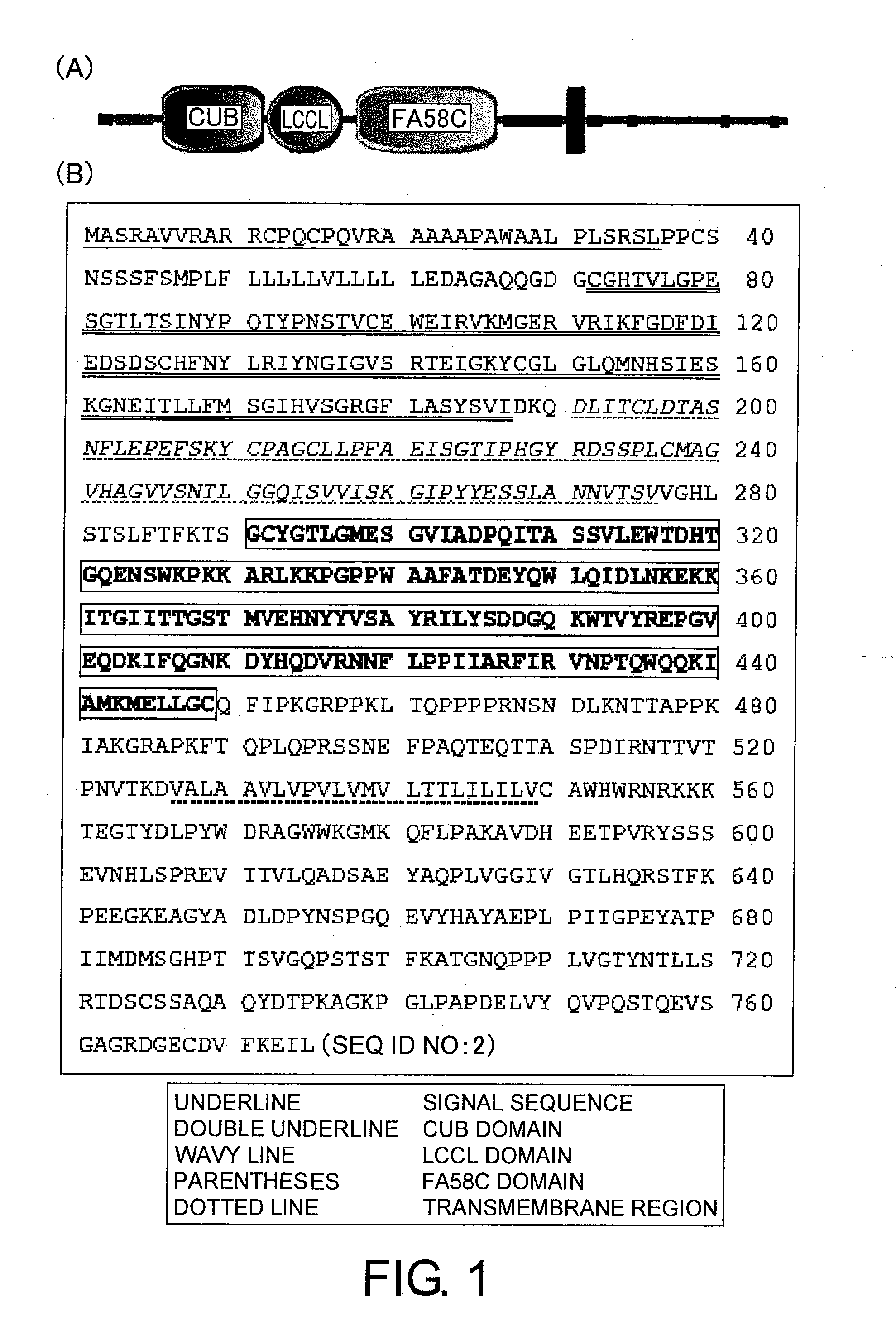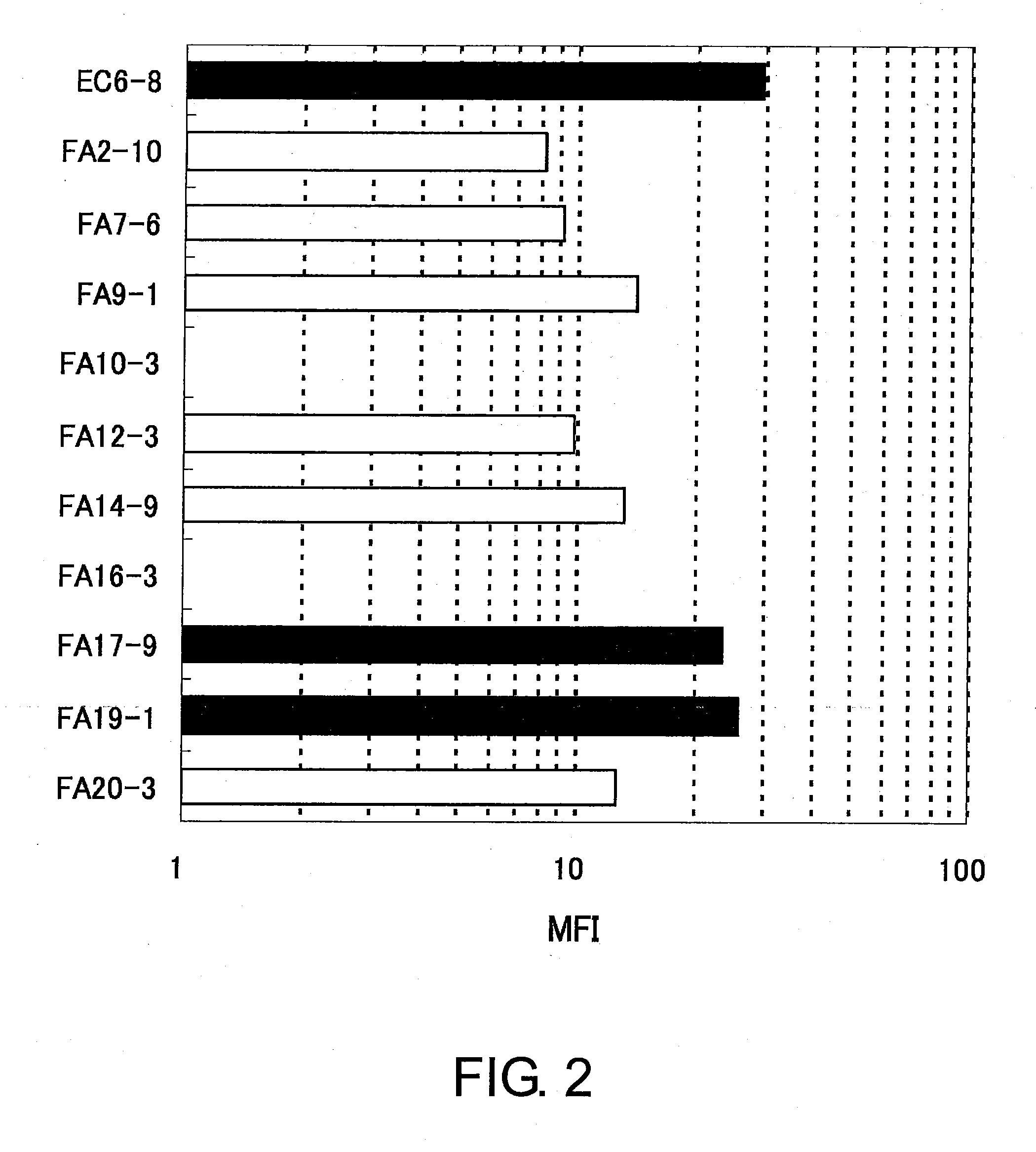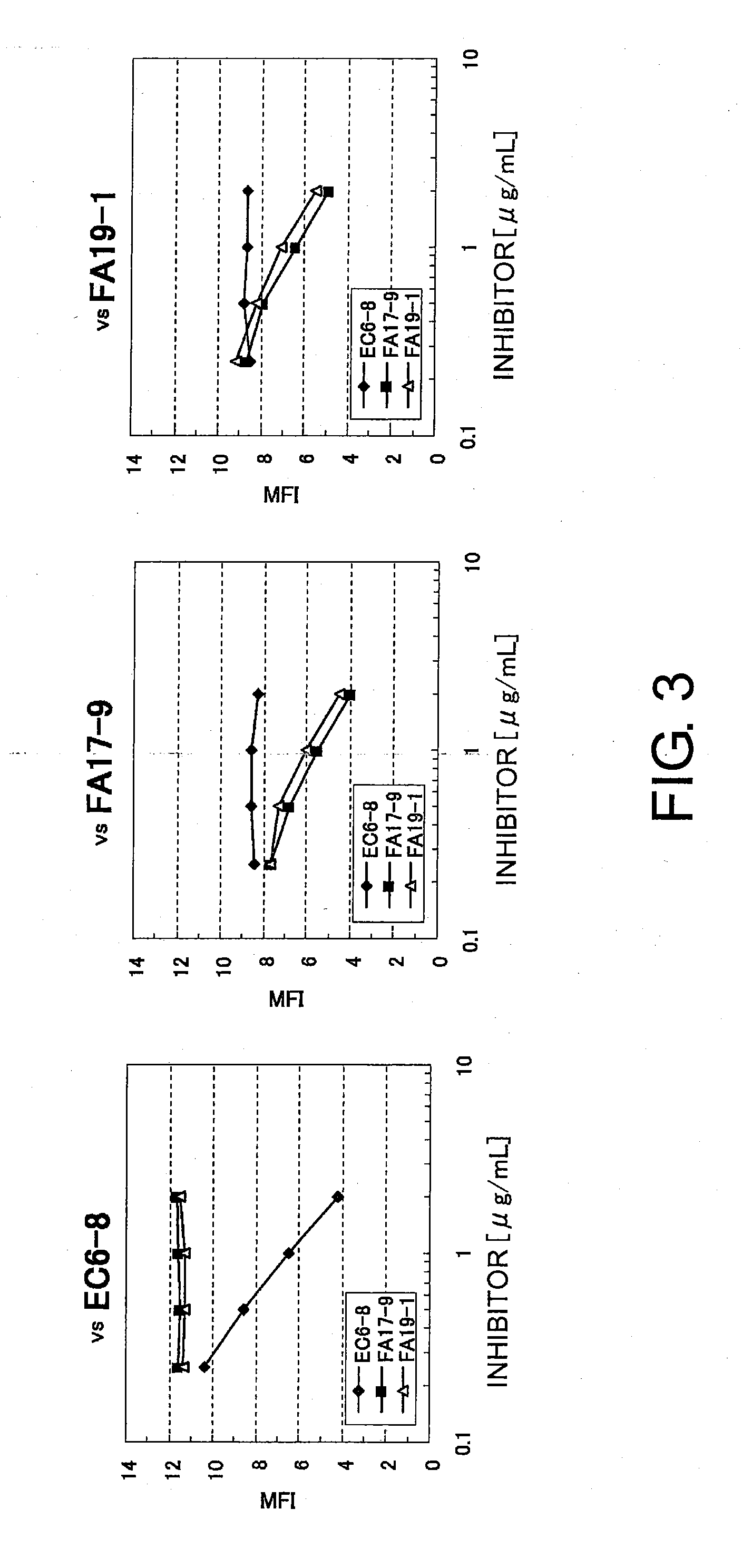Anti-human clcp1 antibody and use thereof
a technology of clcp1 and antibody, which is applied in the field of antihuman clcp1 antibody, can solve the problems of antibody activity and function, and the specific binding of antibodies to molecule remains unavailable on the market, and achieves the effects of increasing the proportion of clcp1-expressing cells, increasing the frequency of invasion/metastasis, and increasing the number of circulating cells
- Summary
- Abstract
- Description
- Claims
- Application Information
AI Technical Summary
Benefits of technology
Problems solved by technology
Method used
Image
Examples
example 1
Preparation of Human CLCP1 cDNA
[0392]ESTs corresponding to CLCP1 were selected from the NCBI EST database. The 3′ end was determined by 3′-RACE. The full-length cDNA sequence of human CLCP1 was determined and deposited in a database (GenBank database, Accession No. AB073146; Koshikawa K, et al., Oncogene 21:2822-2828 (2002)). Primers were designed based on this human CLCP1 cDNA sequence (GenBank database, Accession No. AB073146 (the same sequence as that of NM—080927)). The primer 5′-CCCAAGCTTT GCAGGCAGAC TGCCGGC-3′ (SEQ ID NO: 25) was prepared based on the nucleotide sequence of positions 336 to 356 (5′-CTATGCAGGC AGACTGCCGG C-3′ (SEQ ID NO: 24)) immediately before the first nucleotide (position 364) of the ORF. This primer contains an ATG-to-TTG mutation (underlined) to prevent the initiation of translation from ATG (underlined) in a different reading frame. The primer also has a HindIII recognition sequence (AAGCTT) at the 5′ end. The primer 5′-CGAGGTACCAAGGATTECTTTAAAAACATCACAT-...
example 2
Preparation of Cells Expressing Human CLCP1
[0393]The animal cell expression vector pQCXIPG was used to express the full-length human CLCP1 (amino acid positions 1 to 775) or the whole extracellular domain of human CLCP1 (amino acid positions 1 to 526). pQCXIPG is under the control of CMV promoter, and its IRES sequence allows simultaneous expression of a puromycin-EGFP fusion protein and a gene of interest. On the other hand, the animal expression vector lyssig-pQCXIPG was used to express partial human CLCP1 containing the human FA58C domain (amino acid positions 284 to 526) in animal cells. The secretory signal sequence of chicken egg white lysozyme [amino acid sequence: MRSLLILVLCFLPLAALG|AAA (SEQ ID NO: 27), gene sequence: ATGAGGTCTTTGCTAATCTTGGTGCTTTGCTTCCTGCCCCTGGCTGCTCTGGGG|GCGG CCGCC (SEQ ID NO: 28), whereas “|” indicates the border between the signal sequence and structural protein] is added upstream of the multicloning site of pQCXIPG above. The vector lyssig-pQCXIPG is use...
example 3
Preparation of Immunization Antigen
[0398]The established cell lines described above (hCLCP1-EC / 293T and hCLCP1-FA / 293T) were cultured in DMEM / 10% FBS (5 μg / ml puromycin) or CD293 (Invitrogen). About one liter each of the supernatants were collected, and myc-His Tag-attached recombinant proteins were purified from them using the TALON Purification Kit (Clontech; K1253-1) or an affinity column filled with carriers chemically modified with an anti-myc-tag antibody. Then, the purified proteins were dialyzed against PBS, and assessed by SDS-PAGE and Western blotting. The protein concentrations were determined using Protein Assay Kit II (BioRad; 500-0002JA). The resulting protein samples were used as immunization antigens.
PUM
| Property | Measurement | Unit |
|---|---|---|
| concentration | aaaaa | aaaaa |
| concentration | aaaaa | aaaaa |
| concentration | aaaaa | aaaaa |
Abstract
Description
Claims
Application Information
 Login to View More
Login to View More - R&D
- Intellectual Property
- Life Sciences
- Materials
- Tech Scout
- Unparalleled Data Quality
- Higher Quality Content
- 60% Fewer Hallucinations
Browse by: Latest US Patents, China's latest patents, Technical Efficacy Thesaurus, Application Domain, Technology Topic, Popular Technical Reports.
© 2025 PatSnap. All rights reserved.Legal|Privacy policy|Modern Slavery Act Transparency Statement|Sitemap|About US| Contact US: help@patsnap.com



